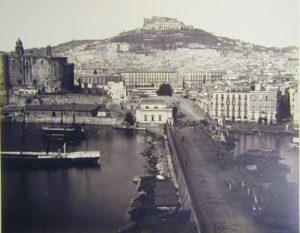 Archaeologists have found the remains of what is believed to be the first port of Naples, underneath the city’s current seafront. Near the Castel dell’Ovo, a team of divers discovered four tunnels about 10 meters (33 feet) below the water, which could have been used to moor ships 2,500 years ago. Also discovered was a 10-foot-wide street with grooves from cart wheels and a trench that was likely used by soldiers.
Archaeologists have found the remains of what is believed to be the first port of Naples, underneath the city’s current seafront. Near the Castel dell’Ovo, a team of divers discovered four tunnels about 10 meters (33 feet) below the water, which could have been used to moor ships 2,500 years ago. Also discovered was a 10-foot-wide street with grooves from cart wheels and a trench that was likely used by soldiers.
“It’s a discovery that opens up a new scenario for reconstructing the ancient structure of Palepolis,” said archaeologist Mario Negri.
Almost 3,000 years ago, in the ninth century BC, Anatolian (modern-day Turkey) and Achaean (modern-day Greece) merchants settled in the area seeking minerals and established the port, which they called Parthenope after a fabled siren who landed there.
Later, the Greeks and Etruscans fought to control it as a trade center; while the Etruscans initially won dominance, the Greeks retook control around 474 and rebuilt the city as Palepolis (meaning “old city”). Neapolis (“new city”) – present-day Naples – was constructed farther inland as a commercial hub, and by the first century BC, Palepolis was home to luxurious patrician villas.
By Kathy McCabe
